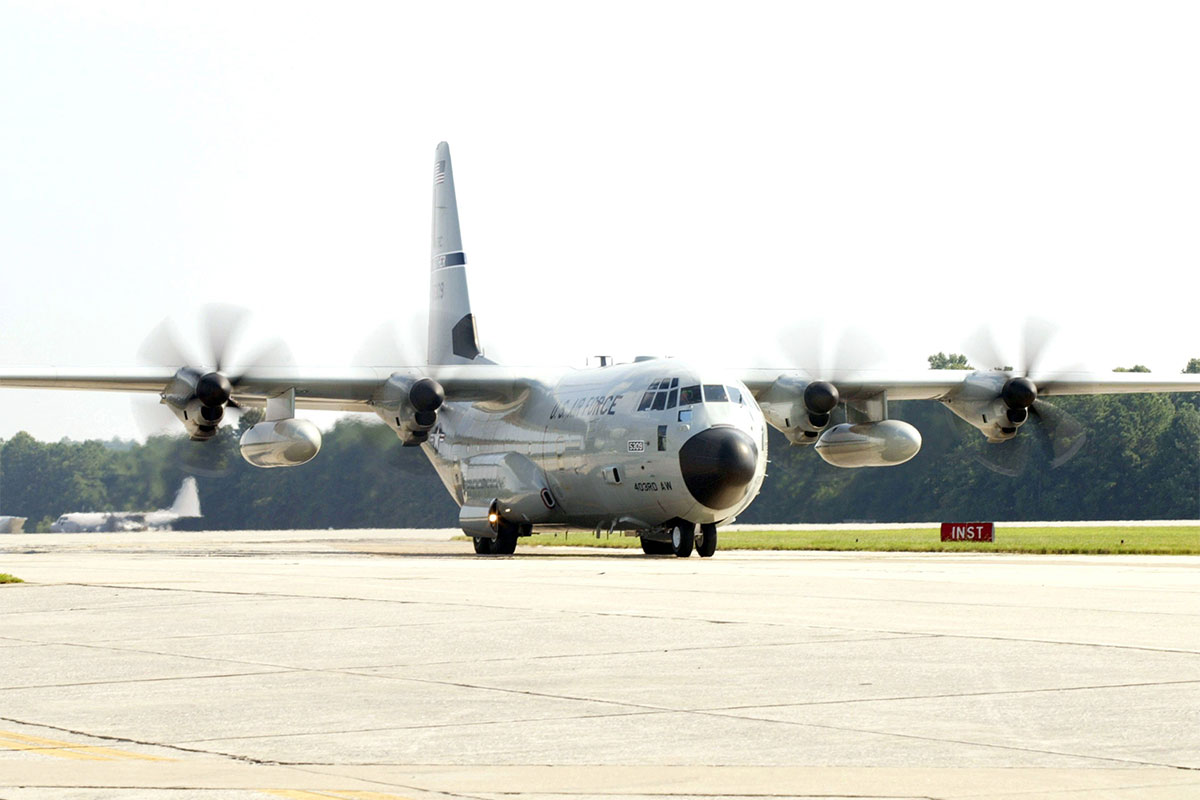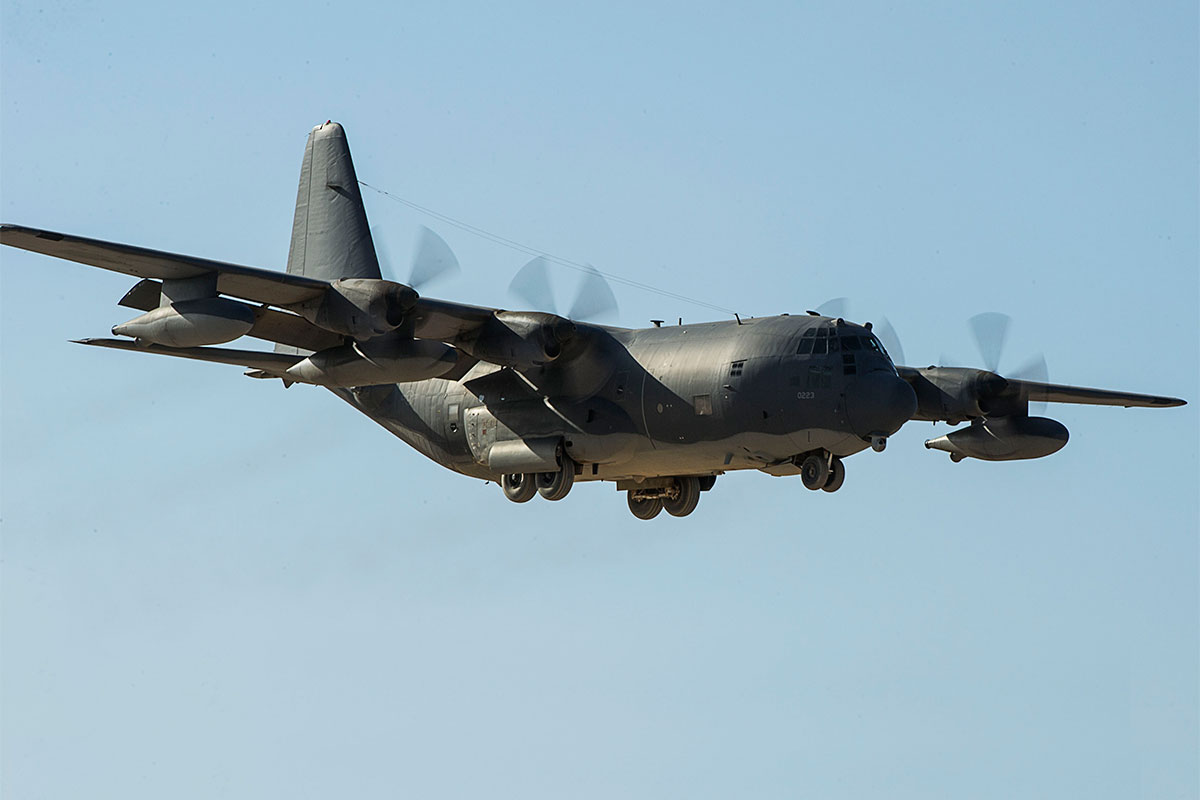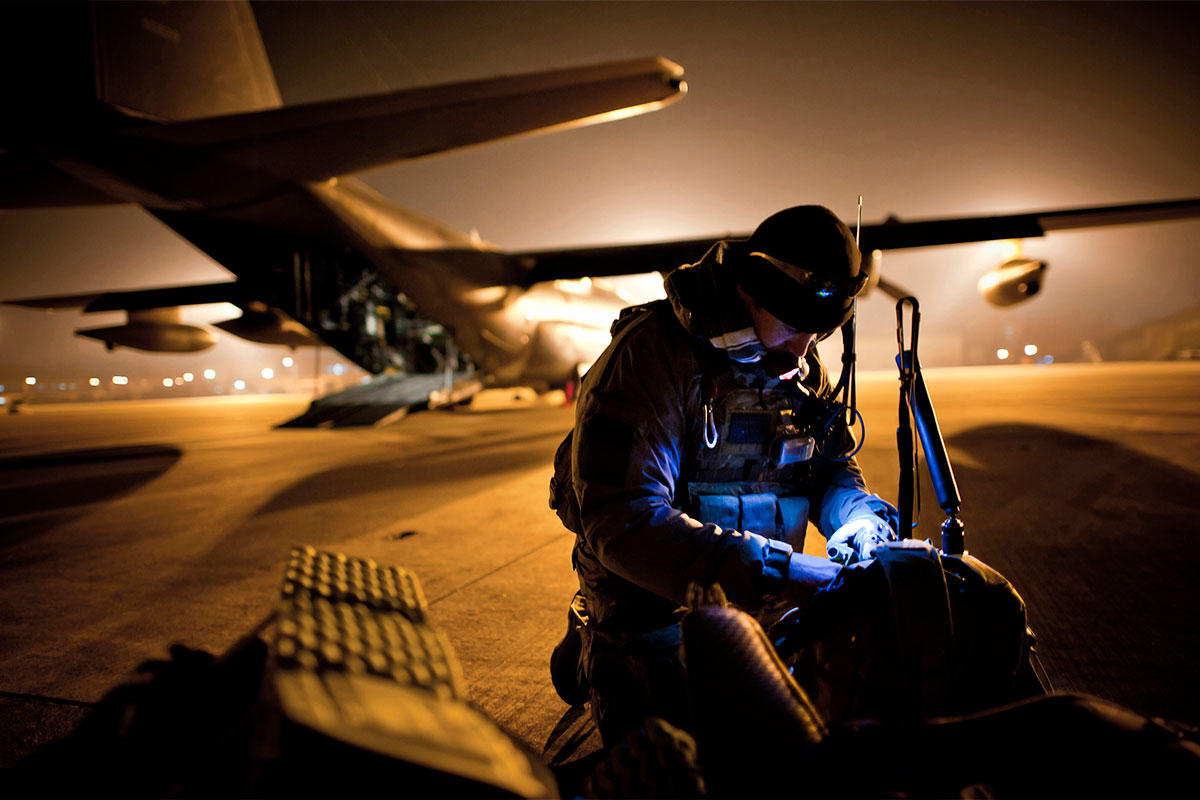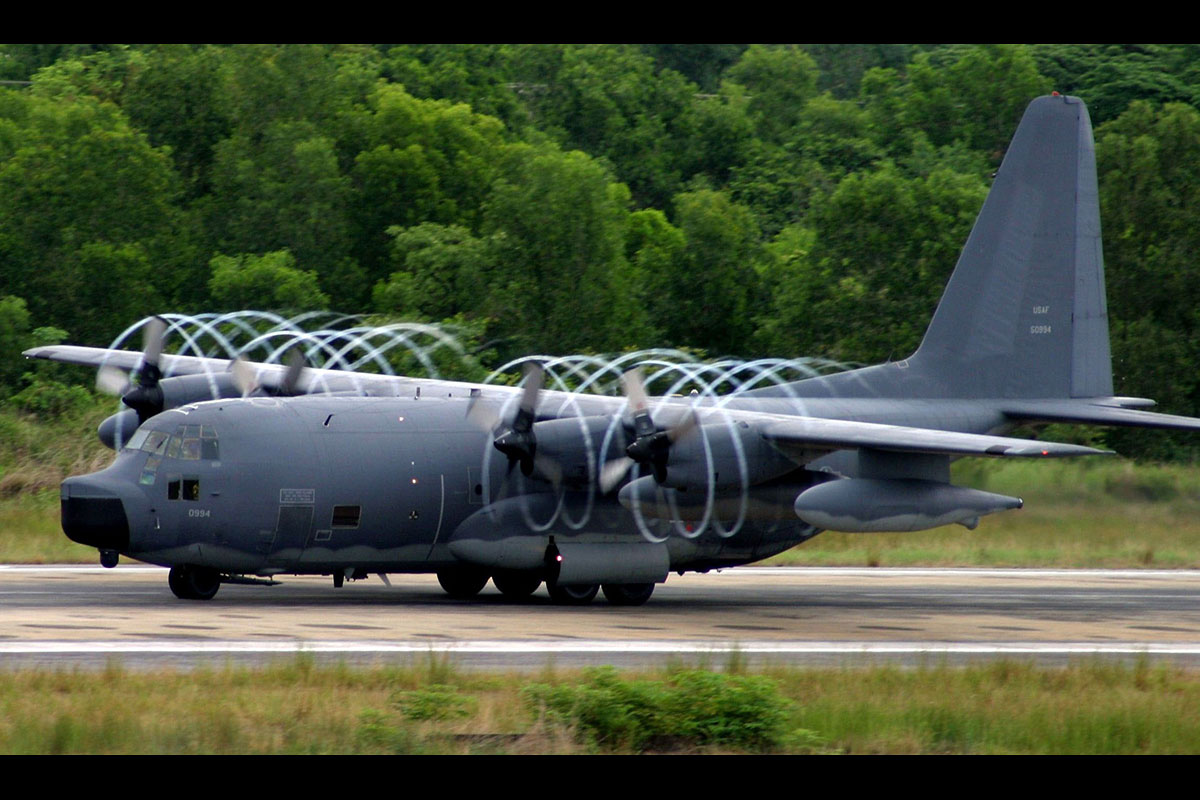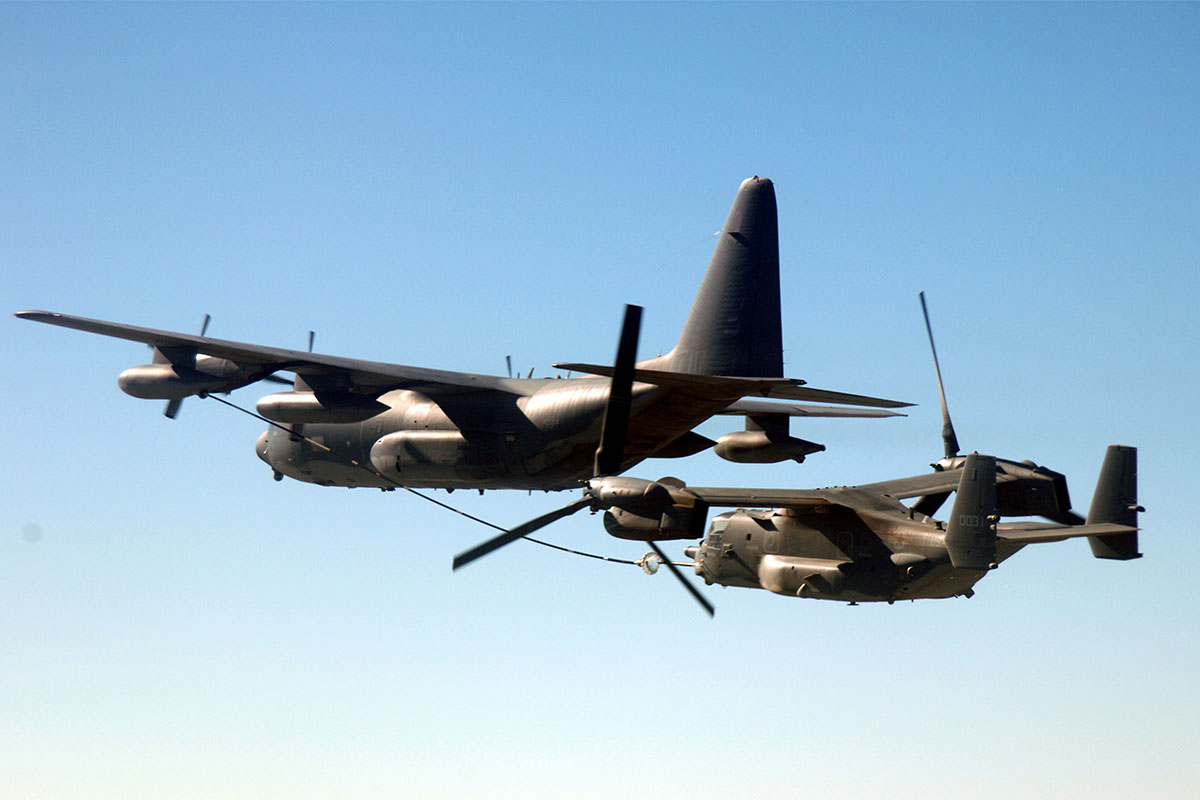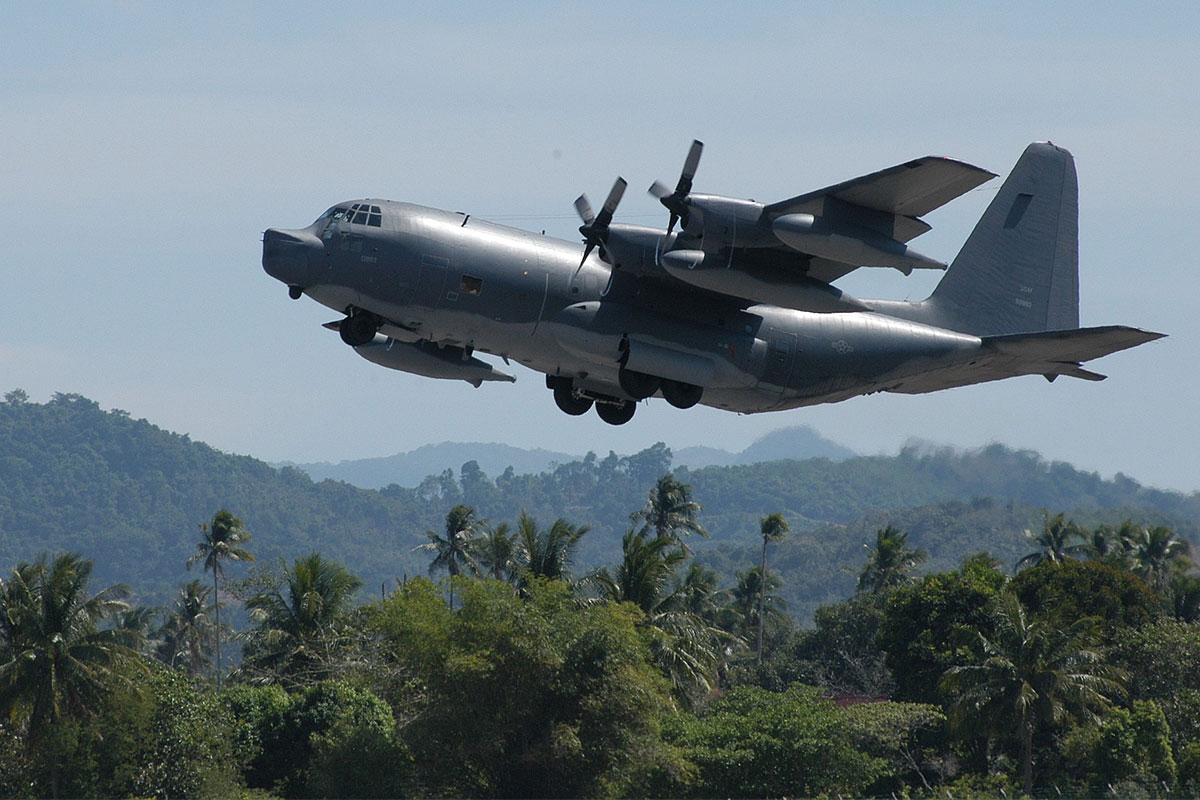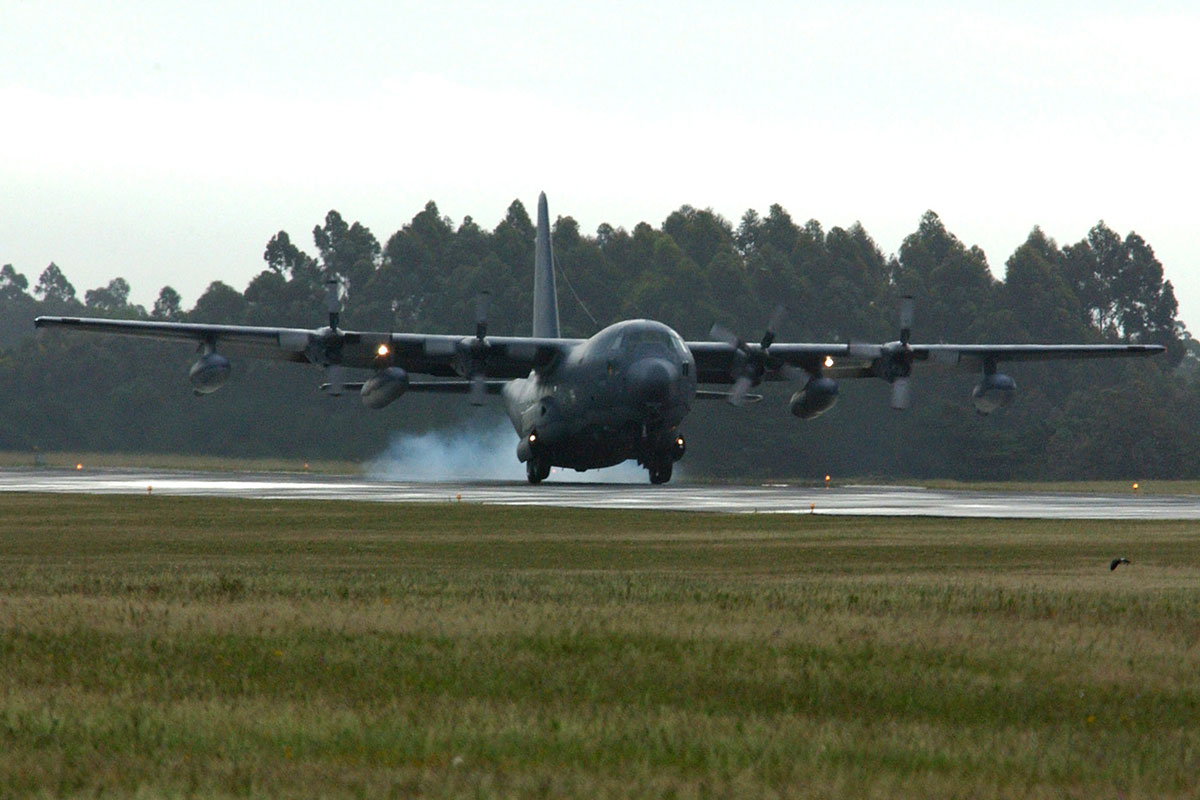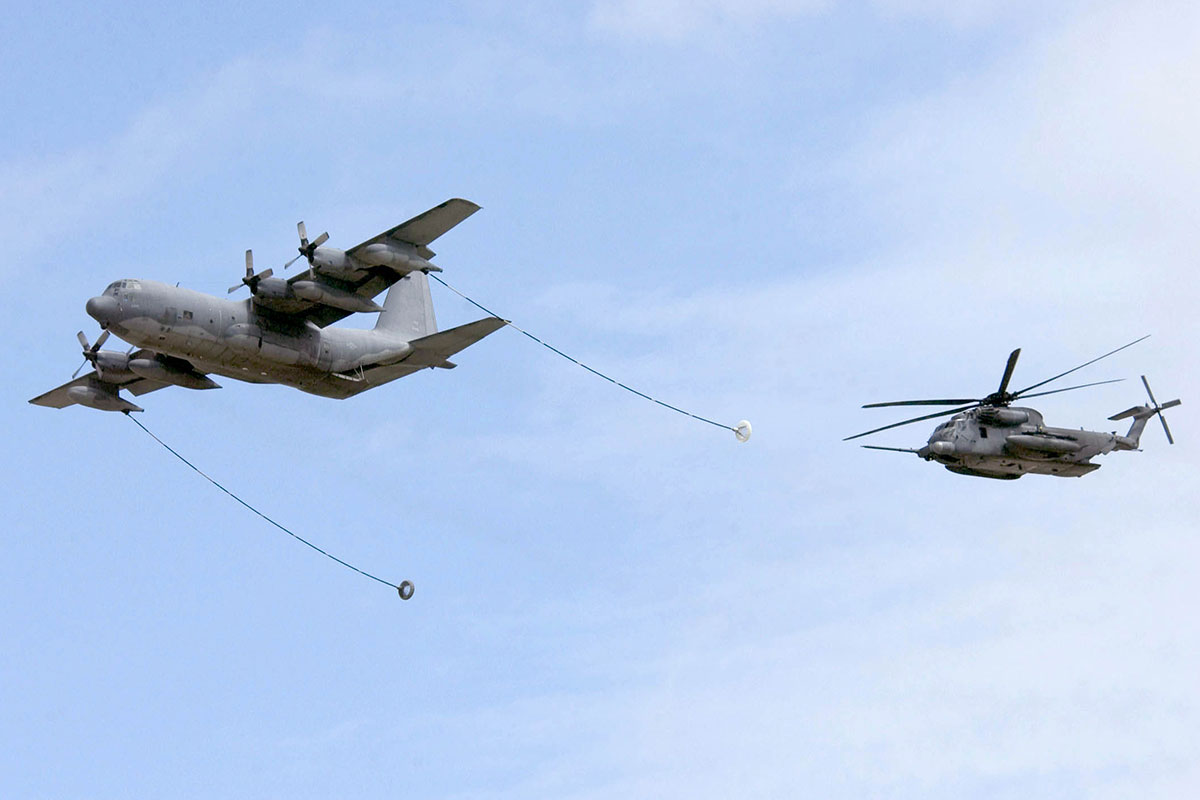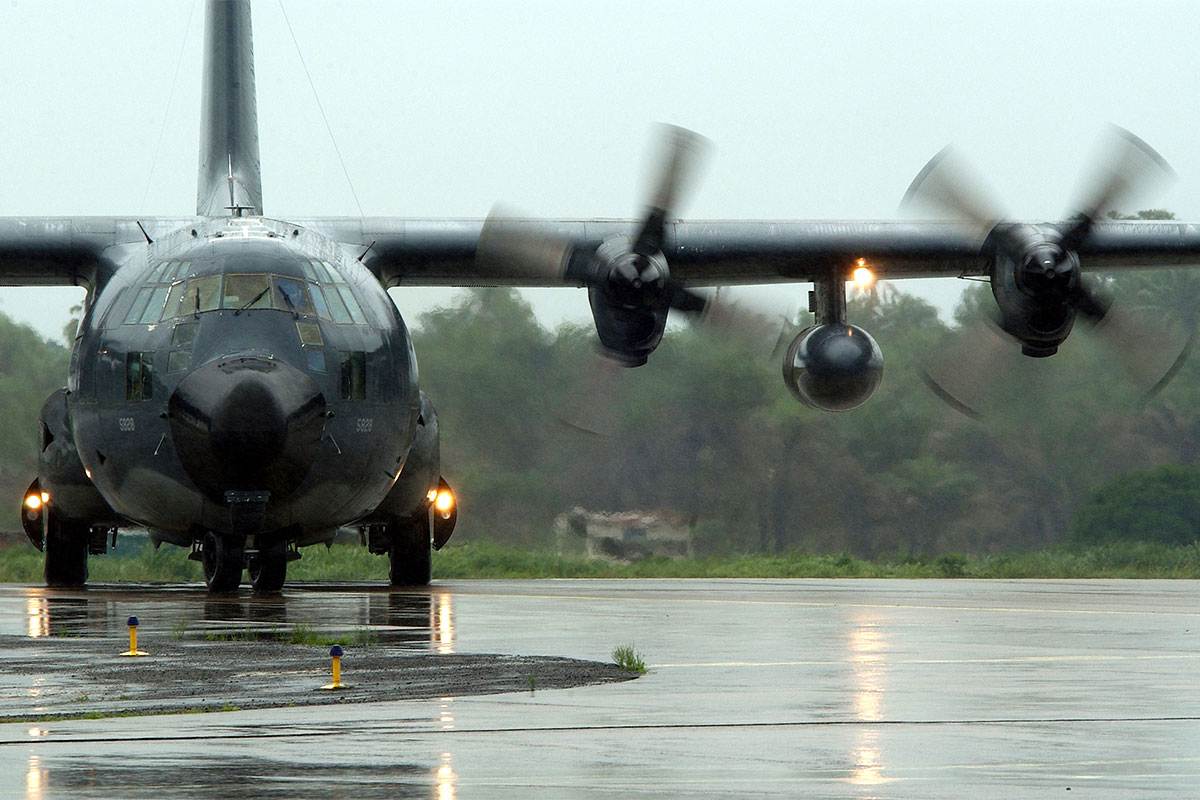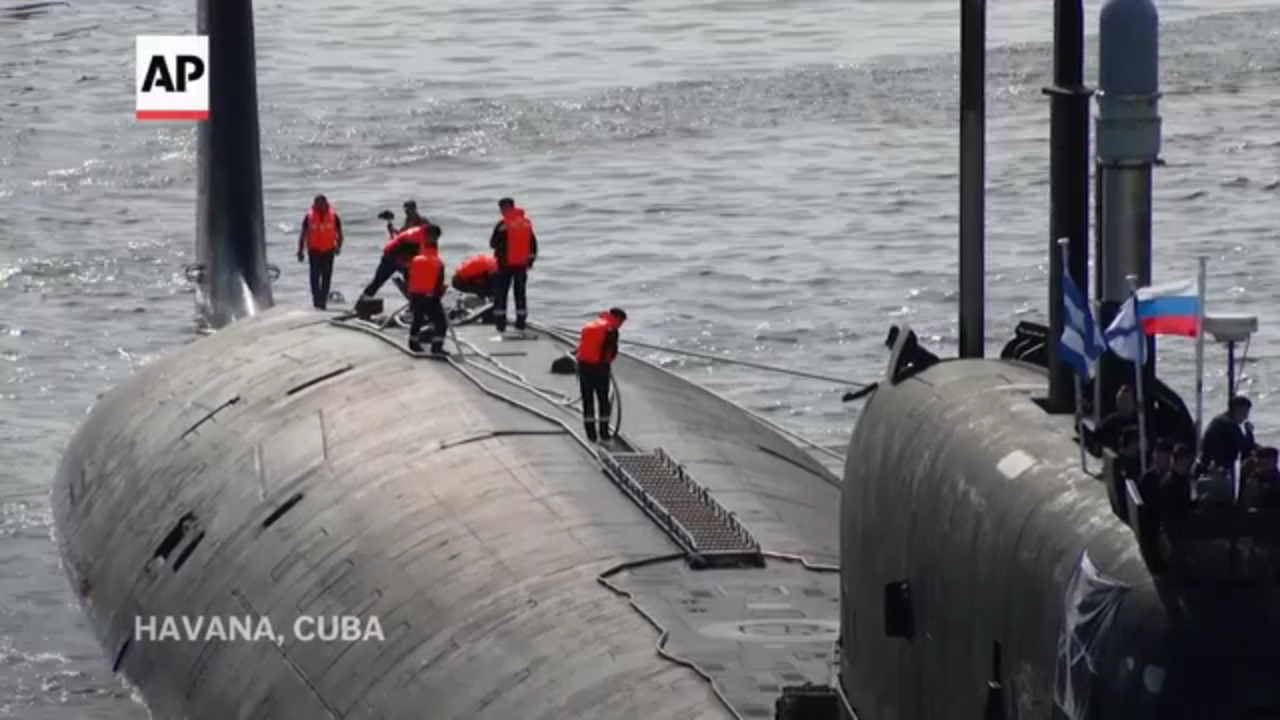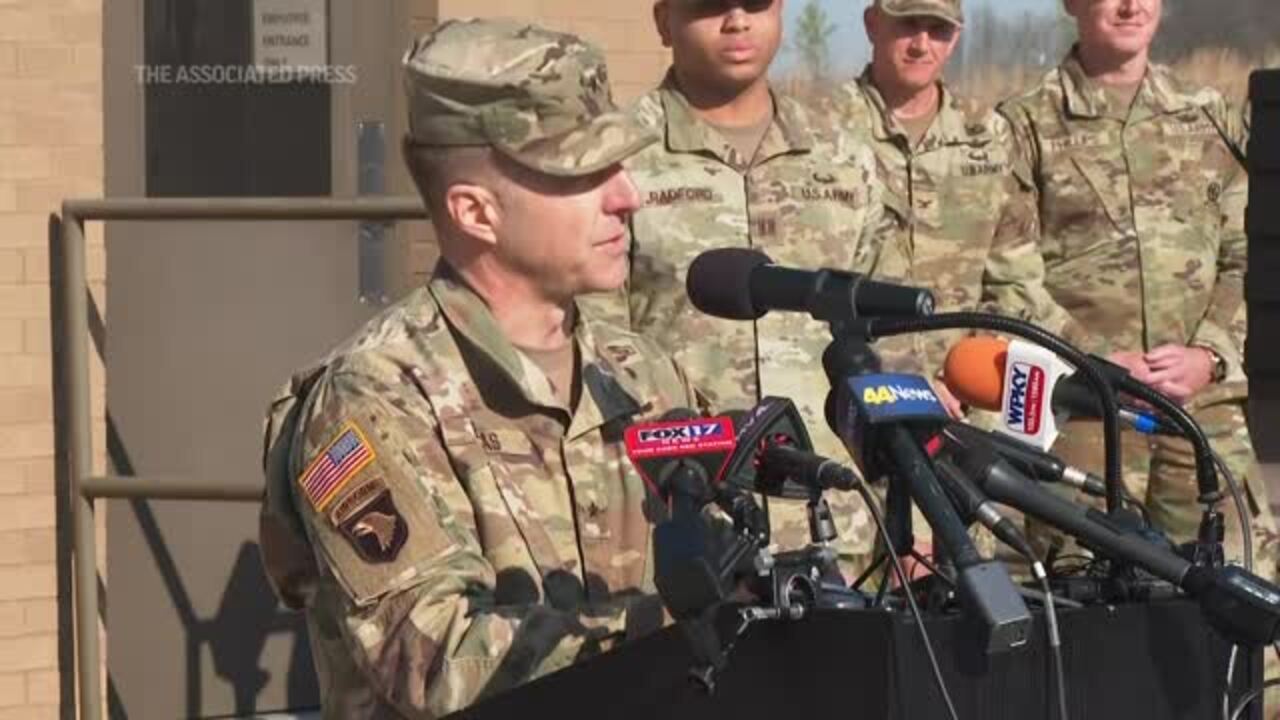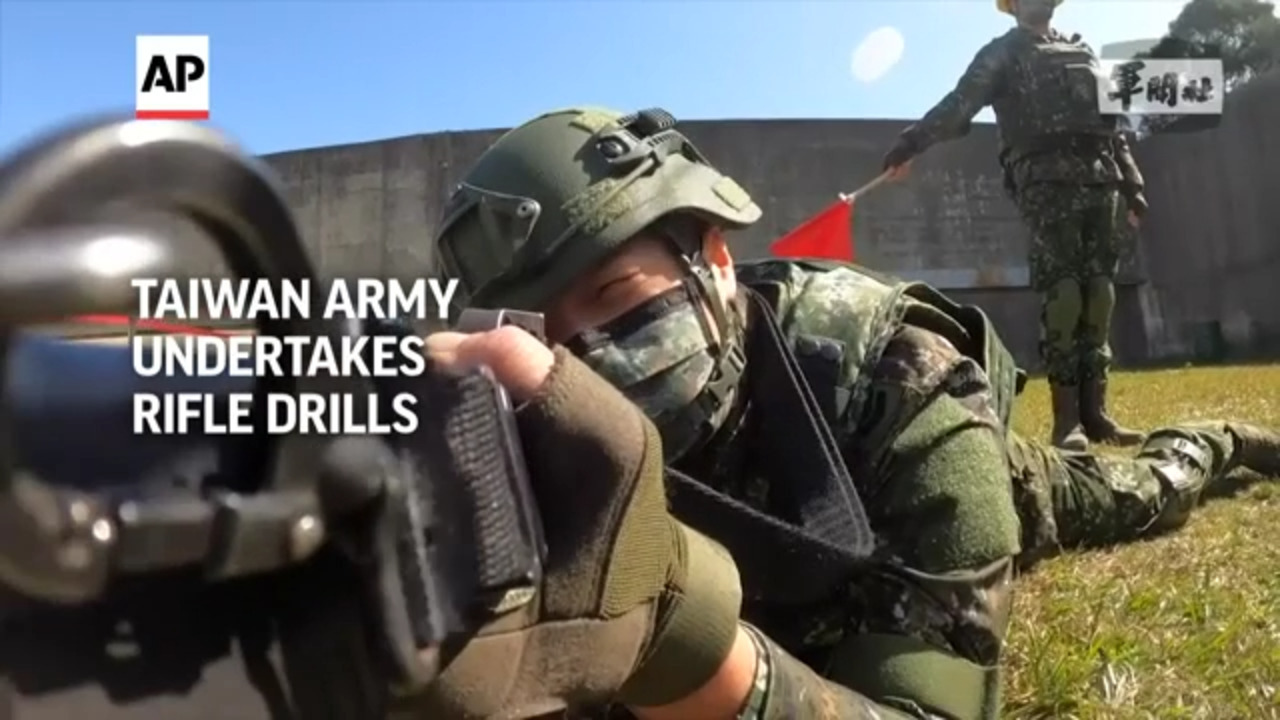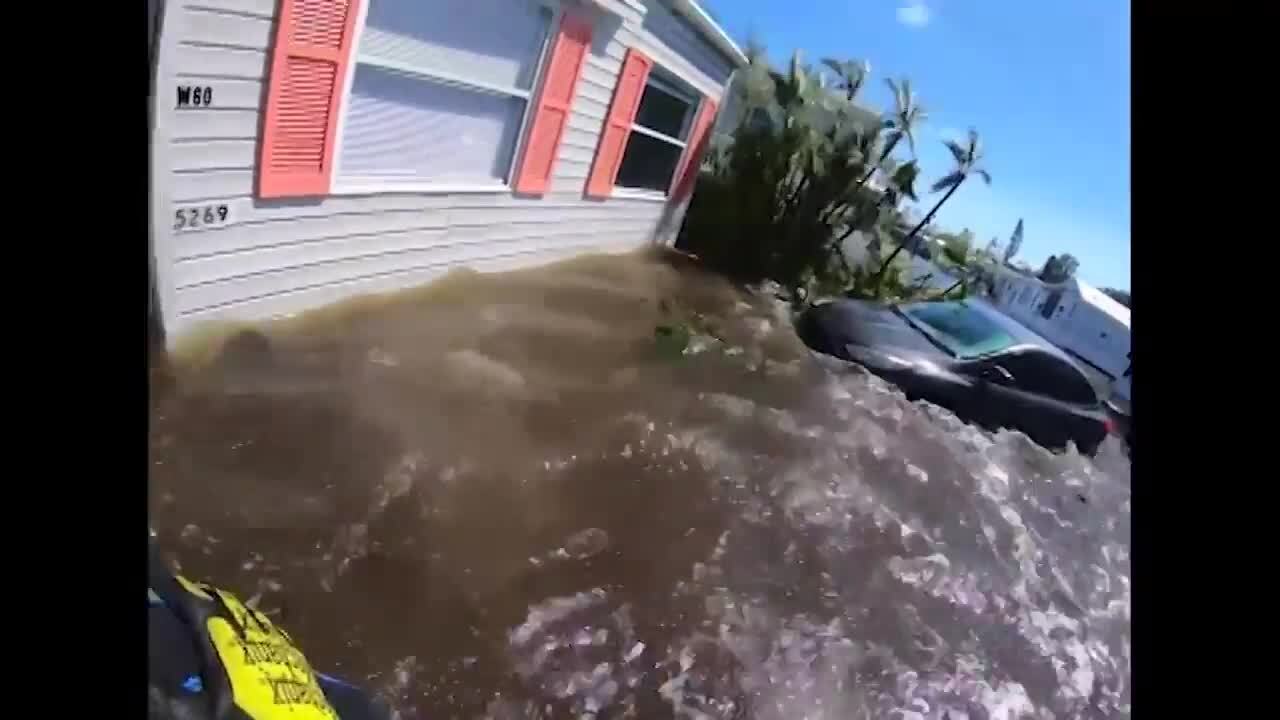Builder: Lockheed Martin
Services: United States Air Force
Power Plant: Four Allison T56-A-15 turboprop engines
Speed: 289 mph (at sea level)
Maximum Takeoff Weight: 155,000 pounds (69,750 kilograms)
Range: 4,000 miles
Crew: Two pilots and two navigators (officers); flight engineer, communications systems operator and two loadmasters (enlisted)
The MC-130P Combat Shadow flies clandestine, or low visibility, single or multi-ship low-level air refueling missions for special operations helicopters, and infiltration, exfiltration, and resupply of special operations forces by airdrop or airland intruding politically sensitive or hostile territories. The MC-130P primarily flies missions at night to reduce probability of visual acquisition and intercept by airborne threats. Its secondary mission includes the airdrop of leaflets.
Modifications to the MC-130P feature improved navigation, communications, threat detection and countermeasures systems. The Combat Shadow fleet has a fully-integrated inertial navigation and global positioning system, and night vision goggle compatible interior and exterior lighting. It also has forward looking infrared, radar and missile warning receivers, chaff and flare dispensers, satellite and data-burst communications, as well as in-flight refueling capability as a receiver (on 14 aircraft).
The Combat Shadow can fly in the day against a low threat. The crews fly night low-level, air refueling and formation operations using night vision goggles. To enhance the probability of mission success and survivability near populated areas, employment tactics incorporate no external lighting and no communications to avoid radar and weapons detection.
MC-130Ps were previously designated HC-130N/P. However, the "H" designation is a rescue and recovery mission code and not representative of the aircraft's special operations role. In February 1996, Air Force Special Operations Command's tanker fleet was redesignated MC-130P aircraft, aligning the Combat Shadow with other M-series special operations mission aircraft. The aircraft have been part of the special operations mission since the mid-1980s. They provided critical air refueling to Army and Air Force helicopters during Operation Just Cause in Panama in 1989. In 1990, the aircraft deployed to Saudi Arabia and Turkey for Operation Desert Storm and provided air refueling of special operations helicopters over friendly and hostile territory.
